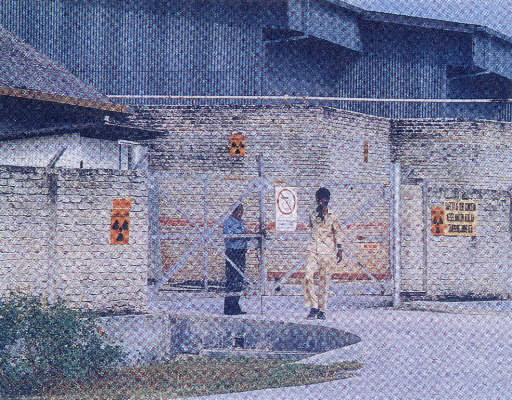1. Living on the Edge of a Nuclear-waste Dump
Feb. 26, 2013
Chapter 4: India, Malaysia, Korea
Part 2: Thorium Contamination in Malaysia
Part 2: Thorium Contamination in Malaysia
Recently several Japanese companies have been criticized for their operations in Southeast Asia which take advantage of low wages and governments that, in their eagerness for industrial development, are willing to turn a blind eye to dangerous practices. In Malaysia, a Japanese company is causing widespread environmental damage with its careless disposal of radioactive waste. In Japan, strict regulations brought a halt to the extraction of rare earths in 1972. However, in Malaysia, these substances are still being refined, although thorium-232, a byproduct of this process, is considered a danger to the environment and the health of the local people. At present, local residents are fighting the company in court in an effort to stop refining operations and obtain compensation.
1. Living on the Edge of a Nuclear-waste Dump
The area around the city of Ipoh in the northwestern state of Perak is Malaysia's largest tin-producing region. In the same ore is found the mineral monazite, the raw material from which rare earths are extracted. Located on the southern edge of Ipoh, which has a population of three hundred thousand, is the Asian Rare Earths complex (ARE), thirty-five percent of which is owned by the Tokyo-based company Mitsubishi Chemicals. ARE's refinery has two hundred employees, and is in operation twenty-four hours a day, disgorging an endless stream of white smoke from its chimneys.
ARE started its refining operation in 1982. Monazite contains seven percent thorium, a radioactive substance which ARE considers a waste byproduct of the refining process. The Malaysian government asked the company to store the thorium, with the aim of utilizing it as an atomic fuel in the future.
Hew Yoon Tat, aged forty-five, lives in the village of Bukit Merah, west of the refinery. He is a butcher by trade, and also chairman of the Perak Anti-Radioactive Action Committee.
"They only had permission from the government to conduct trial operations there, but they went straight into normal production, and at first they didn't bother building any waste storage facilities," he told us angrily.
ARE moved into full production and by the end of 1983 the company had built a waste storage facility three miles from the refinery in the village of Papan. However, there was fierce opposition from the local residents when they discovered that radioactive waste was going to be stored on their doorsteps. The government commissioned the International Atomic Energy Agency (IAEA) to carry out an investigation of the facility. After the agency reported that it was indeed dangerous, ARE was forced to suspend further plans to store the thorium.
This was the first time that the residents of Bukit Merah, a mere half-mile from the refinery complex, had heard anything about radioactive waste. "We were the closest, yet we didn't have a clue...," said Hew. The residents wrote to ARE, demanding to know exactly what was being manufactured and what was contained in the waste from their operations. They received no reply. When the various rare-earth metals, such as yttrium, which is used in color television cathode ray tubes, had been extracted at ARE they were exported to Japan and Europe. According to the company, the waste material was then "stored in a trench."
"Stored? Don't make me laugh," was Hew's response. "The people here know that they just dumped the stuff. We don't need Japan's unwanted waste."








